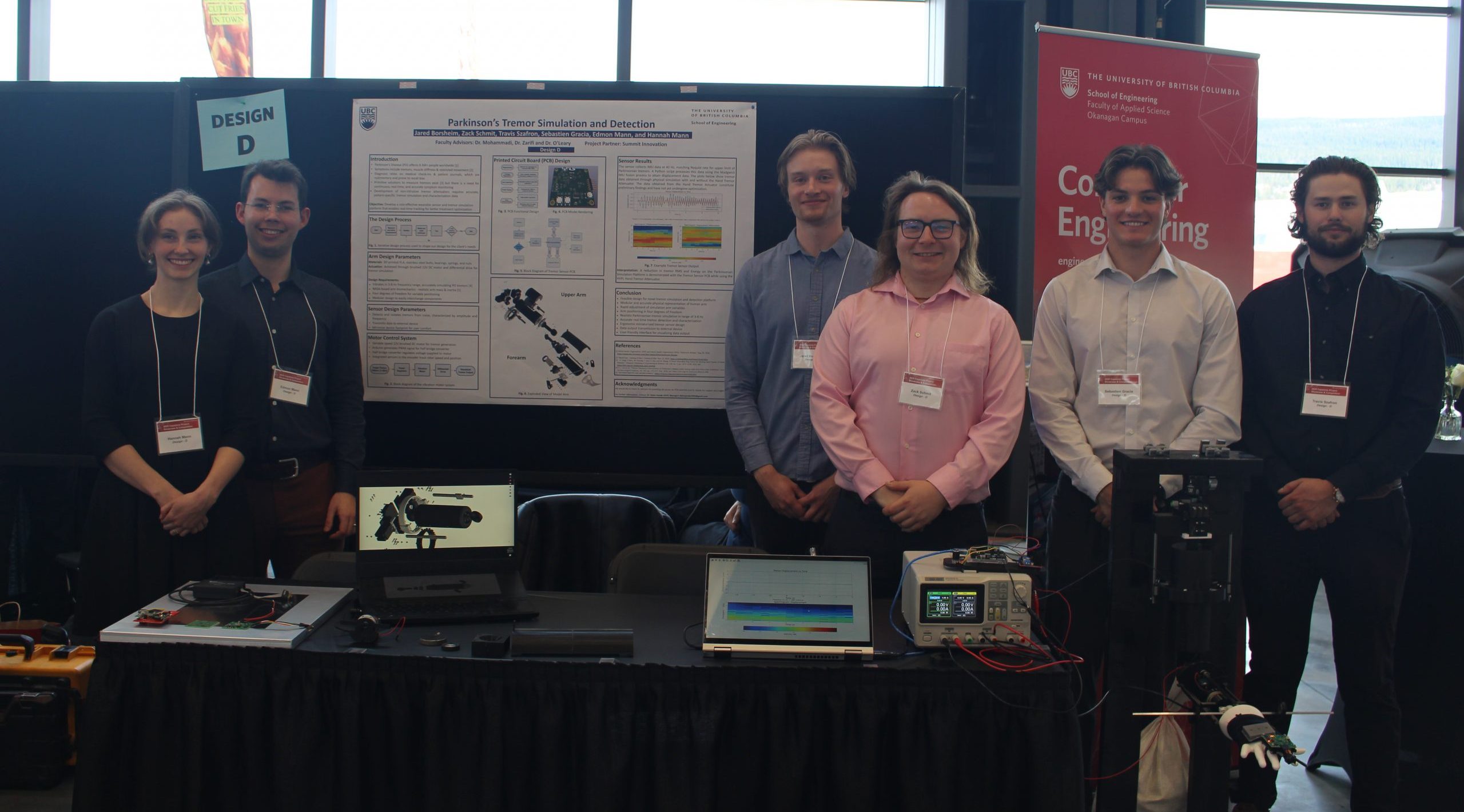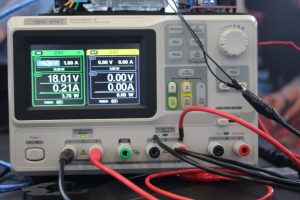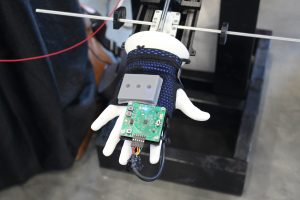Medical engineering design with real-world impact, UBCO students help improve lives of those with Parkinson’s

2024-25 UBC School of Engineering Capstonr Group Design D (in no particular order): Edmon Mann, Hannah Mann, Travis Szafron, Sebastien Gracia, Jared Borsheim, and Zack Schmit
Project Title: Parkinson’s Tremor Sensor & Model Arm.
Student Group: Edmon Mann, Hannah Mann, Travis Szafron, Sebastien Gracia, Jared Borsheim, and Zack Schmit.
Community Partner: UBCO Heart Valve Performance Lab (HVPL), with support from Dr. Hadi Mohammadi, Dr. Mohammad Zarifi, Dr. Stephen O’Leary, Dr. Dylan Goode, and industry partner Manthan Shah from Summit Innovation.
Students in the Capstone Design Project course partner with UBCO’s Heart Valve Performance Lab and Summit Innovation to contribute to on-going Parkinson’s research, helping to develop non-human testing of tremors.
What would be the “elevator pitch” for your project?
Current methods for monitoring Parkinson’s tremor development are rudimentary, and there is currently no method for continuous tremor monitoring and characterization. To further the research into tremor attenuation methods, we designed a wearable tremor sensor and a mechanical model arm that simulates Parkinsonian tremors. This platform helps track tremors in real time and provides a non-human testing setup for future tremor reduction devices – pushing research forward for Parkinson’s treatment.
Check out this video demonstration of how the monitoring system works!
What inspired you to pursue this particular project?
We were inspired by the opportunity to work on a project with real-world medical impact. The chance to contribute to research that could improve the quality of life for people living with Parkinson’s made the work feel really meaningful. It was also exciting to support ongoing work at UBCO’s Heart Valve Performance Lab and be part of something that could advance future clinical tools.
The chance to contribute to research that could improve the quality of life for people living with Parkinson’s made the work feel really meaningful.
What was the biggest challenge you faced while working on your project?
One of our biggest challenges was balancing technical ambition with the time constraints of the project. We aimed to implement wireless communication for the tremor sensor and a PID control system for the motor to simulate precise tremor patterns. These features required more testing, tuning, and integration than we anticipated, and ultimately, we had to pivot to ensure we could deliver a functional and reliable baseline system by the deadline. It was a tough decision, but it taught us a lot about scope management, prioritizing core functionality, and making trade-offs when under pressure.

The sensor produces readings, information that can be seen on this monitor.
What’s the funniest or most unexpected thing that happened while working on your project?
One of the funniest things that happened was realizing our 12-volt motor could actually handle 20 volts and spin way faster than expected. It wasn’t part of the plan, but seeing the arm vibrate wildly definitely caught us off guard.
What excited you the most about your project?
Seeing both the sensor and the arm working together was incredibly rewarding. When we tested the system and watched the arm vibrate within the tremor range while the sensor captured and graphed the data in real time, it felt like a huge relief after eight months of effort. That moment of validation was exciting. Knowing that what we built could one day support researchers or clinicians made the entire project feel meaningful and impactful.

Close-up of the sensor on a mannequin hand.
What is the most interesting/surprising thing you learned while working on your project?
We were surprised by how challenging it is to replicate the biomechanics of a human arm. Details like mass distribution, center of gravity, joint stiffness, and even the way vibrations travel through different materials had a massive impact on performance. We learned that even small design changes could drastically affect our simulation results. It gave us a new level of respect for biomedical design and the complexity of modeling the human body in a meaningful way.
What skills or knowledge did you gain during Capstone that you think will be the most useful/surprise people when you enter the workforce?
We gained hands-on experience in system integration—getting mechanical, electrical, and software components to function cohesively in one platform. This project also forced us to develop project management skills like tracking budgets, timelines, and design iterations. Communicating effectively with stakeholders and documenting everything thoroughly were other huge takeaways. Those are skills that aren’t always taught explicitly, but they make a big difference in the real world.
We gained hands-on experience in system integration … This project also forced us to develop project management skills like tracking budgets, timelines, and design iterations. Communicating effectively with stakeholders and documenting everything thoroughly were other huge takeaways. Those are skills that aren’t always taught explicitly, but they make a big difference in the real world.
What’s one piece of advice you’d give to future Capstone students that you wish you had known at the start?
Start prototyping early and be ready to iterate often. Things rarely work on the first try, and that’s totally normal – early failures are part of the process and often the fastest path to better solutions. Also, keep detailed notes and version your designs. Trust us, when you’re writing the final report or debugging a weird issue in March, you’ll be thankful for good documentation. Most importantly, stay flexible and don’t be afraid to pivot if something isn’t working.
What does the future hold for your project? If you had unlimited resources and time, what would you do to take it to the next level?
The next steps for the project would be to redesign the arm such that it can dynamically move during a tremor simulation to better provide tremor data, to implement Bluetooth and wireless capabilities to the sensor, and to implement feedback control to the motor.
About the Capstone Design Project course: Students in their final year of the Bachelor of Applied Science Program at UBC School of Engineering participate in the Capstone: Engineering Design Project course – ENGR 499. Students use the knowledge and expertise accquired throughout their undergraduate degree to solve real-world engineering problems presented by industry partners, UBC faculty researchers, or the students themselves. It is also an opportunity for students to work with clients, navigate team dynamics and face the everyday challenges that occur in the industry. At the end of the year, students display their projects at the Capstone Design Project Showcase & Competition where they are judged by a select group of engineering industry leaders and UBCO faculty. To celebrate their innovation, we are highlighting some of these interesting projects from the 2024-2025 class!
Learn more about Capstone and how to submit a project proposal for 2025-2026!


